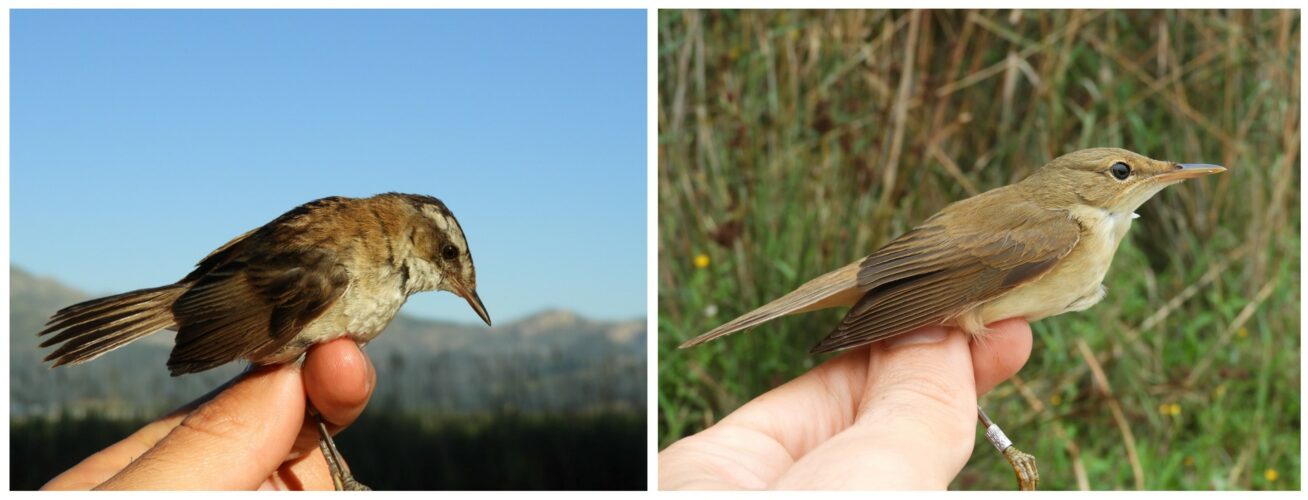Researchers from Campus Gandia of the Universitat Politècnica de València (UPV) and the Cavanilles Institute of Biodiversity and Evolutionary Biology at the Universitat de València have assessed the impact of climate change on the productivity of two passerine bird species. The results reveal that extreme weather events such as increasingly warmer temperatures and greater frequency of torrential rains could compromise the conservation of the populations of these birds.
The study concludes that rising temperatures and more frequent torrential rains may jeopardize the conservation of warblers in Spain. Conversely, rising temperatures might benefit the warbler.
The paper, published in the scientific journal Bird Study, is part of the doctoral thesis of Pau Lucio, a professor at Campus Gandia His research is conducted in collaboration with both the UPV and the Cavanilles Institute of Biodiversity and Evolutionary Biology at the University of Valencia.
The study focused on two species: the Moustached warbler (Acrocephalus melanopogon) and the Common reed warbler (Acrocephalus scirpaceus), both of which are associated with the wetlands of the Mediterranean coast.

The Moustached Warbler is a resident or short-distance migrant bird species, listed as “vulnerable” in the 2021 Red List of Birds of Spain due to its population decline in recent years. Spain is home to the largest population of this species in Western Europe.
By contrast, the Common Reed Warbler, more generalist in terms of its habitat preferences, is a long-distance migratory bird (it visits the Spanish wetlands during the breeding season and spends the winter in Africa) and its conservation status is defined as “least concern”, since it is widely distributed throughout the European continent.
Scientific Bird Ringing
The sampling methodology employed involved capturing birds using mist nets for biometric measurements, age determination, sexing, scientific ringing, and subsequent release. The nets are set up at dawn, and each session typically spans up to five hours.

According to Pau Lucio, the research aims to explore how various climatic and geographical factors influence productivity—specifically, the relationship between the number of juvenile birds born in a year and the adult population of both species. This investigation utilizes a comprehensive dataset spanning 25 years of bird ringing in Spanish wetlands. “Specifically, we have utilized data from the scientific bird ringing program (PASER) to monitor breeding bird species in Spain from 1995 to 2021,” adds Pau Lucio.
Effect of Extreme Weather Events
The study concludes that accumulated rainfall of up to approximately 100 mm supports the productivity of the warbler, whereas rainfall above this threshold negatively impacts the species’ reproduction. Regarding temperatures, the UPV-UV team observed that high values have a negative effect.
Conversely, temperature had a positive effect on warbler productivity, while rainfall showed minimal influence, although productivity also peaked when rainfall approached 100 mm.
“Warmer temperatures and more frequent torrential rains may jeopardize the conservation of the warbler in Spain, given their adverse impact on productivity,” explains Virginia Garófano, a researcher at the Gandia Campus of the UPV. “Conversely, higher temperatures can be beneficial for the warbler.”
Therefore, the study concludes that, in the current climate emergency, warbler populations are likely to decrease, whereas populations of the warbler could potentially increase. Further research is required to determine the precise impact of climate change on survival and its implications for the population trends and dynamics of these two species.
Periods of Climate Sensitivity
One of the main advancements of this study has been the utilization of a large, spatially and temporally diverse database to pinpoint the specific time window during which climatic variables exert the most significant impact on productivity. This approach enables the definition of climatically sensitive periods by considering spatial variables such as site location, longitude, latitude, and elevation, as well as temporal variations across different years.
“This advancement in ecological modeling of bird population trends has been made possible through the application of sophisticated techniques such as data mining, machine learning, and genetic algorithms for optimizing models,” explains Rafael Muñoz-Mas,, a researcher at UPV and co-author of the study.
Reference
Lucio-Puig, P., Muñoz-Mas, R., Belda, E., Gómez, J., Ceresa, F., Garófano-Gómez, V., Pahissa, J., Monrós, J. S. (2024). Unravelling the link between productivity and climate for two sympatric Acrocephalus warblers across Spain. Bird Study, 1–14. https://doi.org/10.1080/00063657.2024.2343956

